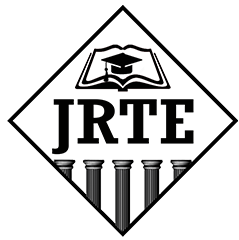Downloads
Proposing a hazard identification and risk analysis system to mitigate the impact of shipping on the marine environment
The X-Press Pearl incident is the worst maritime disaster to have struck Sri Lanka. It has significantly impacted Sri Lanka’s sensitive coastal environment, local communities, and economy. In this situation, Sri Lanka is unable to manage itself. There Sri Lanka had to seek assistance from another country. In a short period, Sri Lanka has been …
Evaluation of the Risk Associated with Marine Environment
A hazard identification and risk analysis system can be applied to various activities and processes, including manufacturing, construction, transportation, and other industries. The system helps to identify and address potential hazards before they result in accidents or incidents, which can help to minimize the risk of injury, damage to property, and environmental impacts. This paper …
Evaluation of the Risk Associated with Marine EnvironmentRead More
DEVELOPMENT OF A MULTI-FUNCTIONAL CHEMICAL VAPOR DEPOSITION SYSTEM FOR THE SYNTHESIS OF CARBON NANOSTRUCTURES
Carbon nanostructure synthesis has been extensively researched recently due to its potential applications in energy storage, drug delivery, imaging, composite materials, field emitters, Nano-electronic devices, EMI shielding, hydrogen storage Nano tanks, functional polymers, sensor materials, and material reinforcement. Vapor deposition is the most common technique used to synthesize carbon Nanostructures, including thin layers, nanotubes, and …
Implementation of Alternative Fuel sources for Industrial Boilers
Mainly this research paper investigates some main points on industrial boilers and their categories, main functions, fuel types and industrial boiler-related air pollution issues. During the combustion, many gases are emitted by these boilers. Because of fossil and non-fossil type fuels, the emission of gases can be changed. NOx, SOx, hydrocarbons, CO and CO2 are …
Implementation of Alternative Fuel sources for Industrial BoilersRead More
Waste Management Systems in Sri Lankan Healthcare and Apparel Industries
Waste management is a growing problem in urban areas and also institutes, industries, and companies around World. But ‘Waste to energy’ or ‘money waste’ is a positive development method in those areas. A proper waste management system for a company is economically and environmentally friendly and can sustain the company without environmental pollution. According to …
Waste Management Systems in Sri Lankan Healthcare and Apparel IndustriesRead More
ISSN
2714-1837
| M | T | W | T | F | S | S |
|---|---|---|---|---|---|---|
| 1 | 2 | |||||
| 3 | 4 | 5 | 6 | 7 | 8 | 9 |
| 10 | 11 | 12 | 13 | 14 | 15 | 16 |
| 17 | 18 | 19 | 20 | 21 | 22 | 23 |
| 24 | 25 | 26 | 27 | 28 | 29 | 30 |
| 31 | ||||||
Our Visitors






 Users Today : 23
Users Today : 23 Total Users : 27099
Total Users : 27099 Views Today : 31
Views Today : 31 Total views : 78227
Total views : 78227 Who's Online : 0
Who's Online : 0 Your IP Address : 18.221.215.5
Your IP Address : 18.221.215.5

